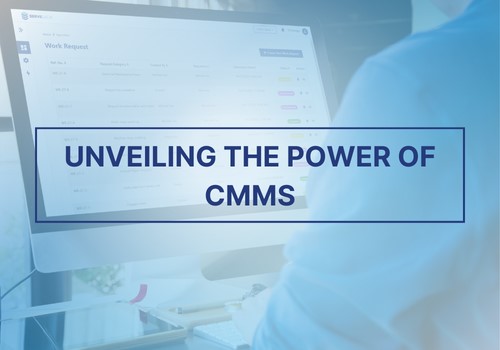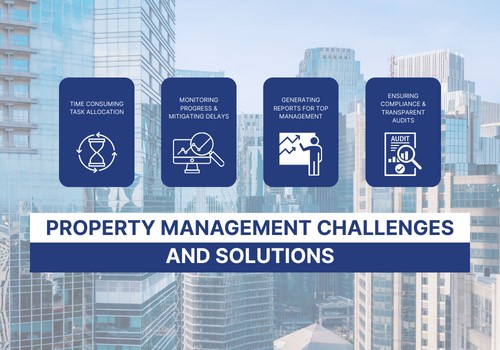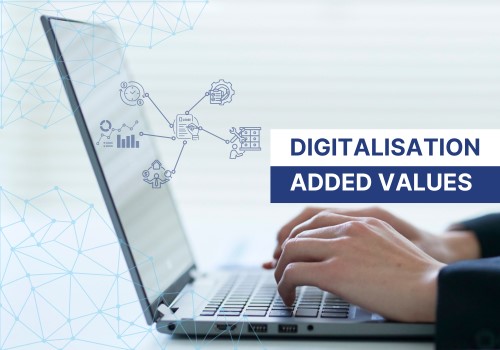7 RADICAL Steps for Property and Facility Management Problem-Solving

Imagine facing a problem, one of those head-scratching puzzles that makes your day a bit more complicated. Whether it's a leaky faucet at home or a complex challenge in the world of property and facility management, the process of finding a solution can sometimes feel like resolving a riddle.
We thought that having an intuitive problem-solving model could come in handy to structure the way we all address problems and challenges. To make the process easy to remember and fun during the application time, we named it RADICAL with every single letter of it having relevance on one step of the process.
Problem-Solving Challenges in Property and Facility Management
Property and facility management is like the conductor of a symphony, ensuring everything runs harmoniously. However, the tune does not always flow smoothly. Property managers often deal with a range of issues, from emergency maintenance requests and tenant complaints to budget constraints and compliance hurdles. These challenges can be like tangled knots and untangling them requires a methodical approach.
The RADICAL problem-solving model, while adaptable to various challenges in different industries, finds a particularly comfortable home in property and facility management. Picture a property manager faced with a persistent issue: recurring HVAC problems, inconsistency of temperature, and excessive noise in an office tower. He needs to find a way to not only fix the immediate problem but also ensure it does not keep coming back like a stubborn ghost.
That is where RADICAL steps in. This model is not just a set of instructions; it is a mindset, a philosophy, and a guide to approaching problems with the assurance that solutions are within reach. RADICAL is about understanding that every problem is an opportunity in disguise, and that with the right approach, even the most intricate knots can be unravelled.
The choice of the word "radical" in the RADICAL problem-solving model is deliberate and meaningful, as it encompasses two key aspects of effective problem-solving.
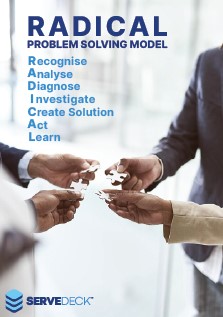
Firstly, "radical" implies a commitment to resolving a problem once and for all. When a problem is dealt with in a radical manner, it means that every effort is made to ensure that it does not resurface in the future. This approach is crucial in property and facility management, where issues left unaddressed can lead to recurring headaches, waste of time, resources, and money.
Secondly, "radical" signifies the importance of going down to the roots of a problem. Many problems have complex and interconnected causes, and merely addressing superficial symptoms often leads to temporary fixes. By taking a radical stance, you are committing to a thorough investigation of the issue. In property and facility management, where issues can have multifaceted origins, a radical approach ensures that you are not just putting a Band-Aid on the issue but getting to the heart of the matter. It is akin to pulling out weeds by the roots rather than just trimming the leaves, making sure they do not grow back.
The RADICAL problem-solving model embodies the idea of comprehensive problem-solving. In the world of property and facility management, where efficiency, tenant satisfaction, and long-term stability are paramount, we believe this approach is invaluable.
Let us embark on this journey through the seven steps of the RADICAL problem-solving model by imagining yourself as the property manager of an office tower with more than 200 tenants, and, continuing with the example set above, HVAC is repeatedly giving temperature and noise issues.
You want to resolve this challenge once and for all! Here is how using the RADICAL way.
R: Recognize the Problem

This step involves identifying and acknowledging the existence of a problem. It is the initial awareness that there is a problem, and something needs to be addressed.
Actions
-
Promptly acknowledge tenants’ complaints and express concern for the reported problem.
-
Alert the maintenance department of the reported issue and ask to address the problem in a definitive way.
Significance
Recognizing the problem is vital to address tenants’ concerns. It shows responsiveness and the commitment to maintaining a safe and functional environment for your tenants. This will foster tenant satisfaction and preserves the property's reputation.
A: Analyse and Define the Problem

After recognizing the reported HVAC problems, the next step is to Analyse and Define them thoroughly.
Actions
-
Coordinate a physically inspection to assess the origin of the issues with maintenance team.
-
Request to document the findings with photographs and notes.
-
Meet the tenant to gather information and verify previous history and actions taken.
-
Work with the maintenance department and external contractors, to form hypotheses about the potential causes of the problem.
-
Clearly define the scope of the problem. Determine whether there is a recurrent path of the temperature and noise issues and if it is happening in specific areas, randomly or within recurrent times.
-
Assess the urgency of finding a solution, the impact on the budget and on tenants’ operations, and how urgent the issue is.
Significance
The Analyse & Define steps is crucial because it provides a detailed understanding of the problem, the possible cause, its severity, and the necessary actions to resolve it.
D: Diagnose the Root Causes
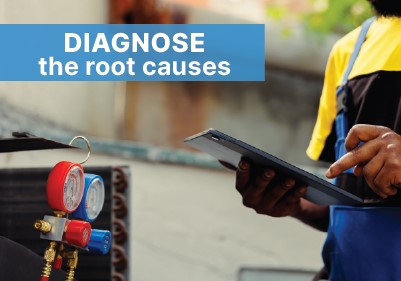
Actions
-
Engage the services of specialists or contractors to conduct a comprehensive inspection and identify the root causes.
-
Review Maintenance Records for the HVAC system to understand its maintenance history.
-
Identify any past issues or trends contributing to the current problem.
-
Carry on a technical assessment of the single components of the system looking for signs of wear and tear or damage.
-
Consider external factors that could affect the HVAC system, such as changes in weather or external sources of contamination.
-
Evaluate whether the HVAC system is nearing the end of its expected lifespan.
Significance
In this phase, you focus on determining the causes of the problem. It is about understanding why the problem exists in the first place, going “Radical” in finding a permanent solution.
I: Investigate Contributing Factors
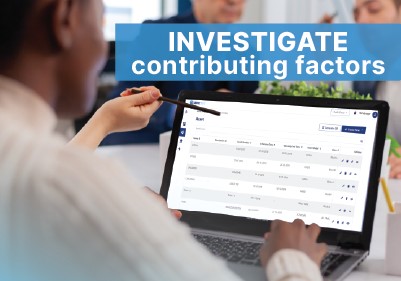
After diagnosing the root causes of an HVAC system issue in a commercial building, the "I" step, Investigating Contributing Factors, becomes essential to find the right solution through a comprehensive understanding of the problem.
Actions
-
Review HVAC Maintenance Protocols and history to ensure that regular maintenance has been conducted as per industry standards.
-
Inspect the single components affecting system performance.
-
Engage with the complaining tenants to understand their practices related to HVAC system usage.
-
Check whether energy-saving measures have been implemented and might be affecting the system’s performance.
Significance
This step ensures a more holistic and effective resolution to the HVAC system issue while helping in preventing future occurrences by mitigating external and internal factors affecting the system's performance.
C: Create Solutions for the issue
Having recognized, analysed, diagnosed, and investigated the contributing factors of the HVAC system issue bring us to the "C" step, Creating Solutions. This is the step where the “once and for all” solution is finally created.
Actions
-
Explore various repair or replacement options.
-
Revise and eventually enhance the HVAC maintenance protocols.
-
Communicate with the tenants and ensure they will follow the guidelines.
-
Evaluate the feasibility of HVAC system upgrades or replacements if the root causes are related to aging components or entire system.
-
Collaborate with the property management financial team for the budget allocation for the proposed solutions.
Significance
Creating solutions is the key step in the problem-solving process, especially for complex issues involving HVAC system. It is the stage where the insights gained from the previous steps are transformed into actionable plans to address the HVAC issue effectively.
This phase is about proactively improving the property's infrastructure and management practices to ensure long-term functionality and tenant comfort.
A: Act and Implement Solutions

Once solutions have been created and action plans set in place, the "A" step, Act, and Implement Solutions, is the practical phase where these solutions are executed to address the problem effectively.
Actions
-
Set a collaborative execution of the plans with HVAC specialists and the maintenance department.
-
Keep the tenants informed about the implementation of solutions.
-
Promptly execute the planned solutions to minimize downtime or disruptions.
-
Monitor the implementation progress to ensure all aspects are carried out following the established strategy.
Significance:
Acting and implementing solutions is the stage where plans are put into motion to resolve the issue. Open communication with the tenant helps in managing their expectations and ensuring their comfort.
L: Learn and Reflect
In a commercial property context, after successfully executing solutions for any issue, the "L" step, Learn and Reflect, is where you assess the problem-solving process and draw valuable lessons for the future.
Actions
-
Proceed with a full evaluation of the implemented solutions’ outcomes.
-
Document the entire problem-solving process to create a comprehensive case study for future reference.
-
Seek feedback from tenants, external vendors involved in the solution, and the maintenance department.
-
Reflect on what worked well during the process and identify areas that could be improved.
-
Use the insights gained from the problem-solving experience for more efficient and effective operations management.
Significance
The Learn and Reflect phase is critical for the continuous improvement of property and facility management practices. By assessing the outcomes, documenting the experience, and gathering feedback, property management teams can refine their approach to problem-solving and enhance tenant satisfaction.
Conclusion
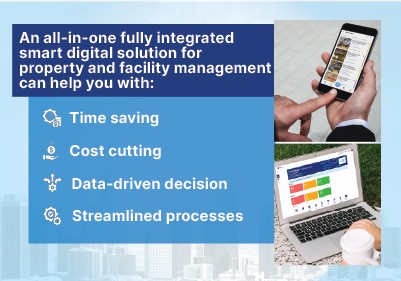 In conclusion, the RADICAL problem-solving model brings a comprehensive and effective approach to property and facility management challenges. It not only ensures that immediate problems are addressed but also paves the way for lasting solutions.
In conclusion, the RADICAL problem-solving model brings a comprehensive and effective approach to property and facility management challenges. It not only ensures that immediate problems are addressed but also paves the way for lasting solutions.
By choosing the "radical" path, property managers can rest assured that problems will not reappear, and issues will be tackled at their roots. Now, if we combine the RADICAL model with a comprehensive, all-in-one digital solution for property and facility management such as ServeDeck, property managers will be able to supercharge their problem-solving process and getting the following valuable benefits:
Save Time & Reduce Costs
Saving time and money by streamlining every step of the RADICAL model, from problem recognition to solution implementation through a digitalised process. Automated processes, real-time data access, and task management tools, available in ServeDeck, will cut down on administrative overhead, saving precious time, and reducing operational costs. This efficiency is critical in property and facility management, where swift problem resolution can prevent costly disruptions and maintain high tenant satisfaction.
Creating Permanent Solutions
ServeDeck digital platform empowers property managers with data-driven insights, ensuring a more thorough analysis and issues’ root cause diagnosis. It facilitates quick access to maintenance records, historical data, and maintenance protocols, enhancing the accuracy of decision-making. With detailed information at their fingertips, property managers can create solutions that are not just quick fixes but sustainable, and "once and for all" resolutions.
Streamlining the Process
The RADICAL model aligns seamlessly with a digital property and facility management platform such as ServeDeck. Each step is complemented by features like collaborative communication tools, maintenance history databases, and reporting dashboards. With such a platform, property managers can efficiently implement solutions and ensure that they align with maintenance best practices and industry standards.
In conclusion, the RADICAL problem-solving model, when paired with ServeDeck’s all-in-one integrated digital solution for property and facility management, paves the way for more efficient and effective operations. This digital constructive collaboration saves time and money, creates lasting solutions, and smooths the entire problem-solving process. Property managers can conduct their symphony of operations with confidence, knowing that issues will not reappear, and that the intricacies of their work will be harmoniously managed.
ABOUT THE AUTHOR
.jpeg)
The opinions expressed in this article are solely of the author, Dr Daniele Gambero.
Dr Gambero has been an expatriate to Malaysia from Italy, since 1998 and has more than 35 years of real estate experience. He is the co-founder and group CEO of REI Group of Companies, the Co-founder of Propenomy.com and the president of the Malaysia Proptech Association.
In the past 10 years Daniele, as international and TEDX speaker, has engaged several hundreds thousand people talking about Property, Economy, Propenomy, Digital Marketing and Motivation. He is also a bestselling author and columnist on several magazines and main stream media. You can reach him directly through his LinkedIn page here.
SHARE THIS POST:
Comments (0)
Leave a Reply
Your email address will not be published. Required fields are marked *


